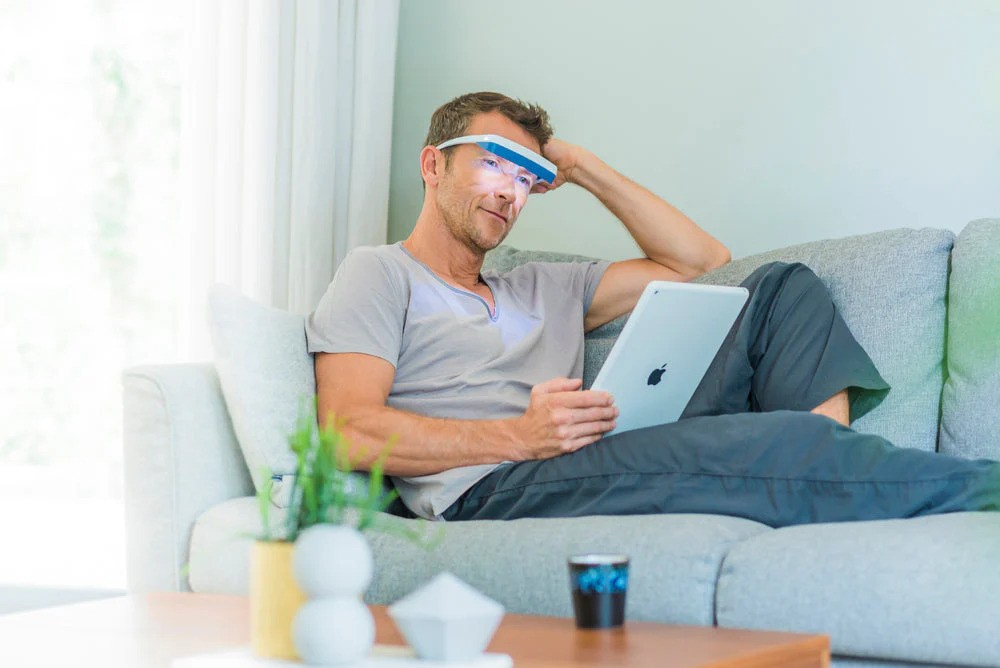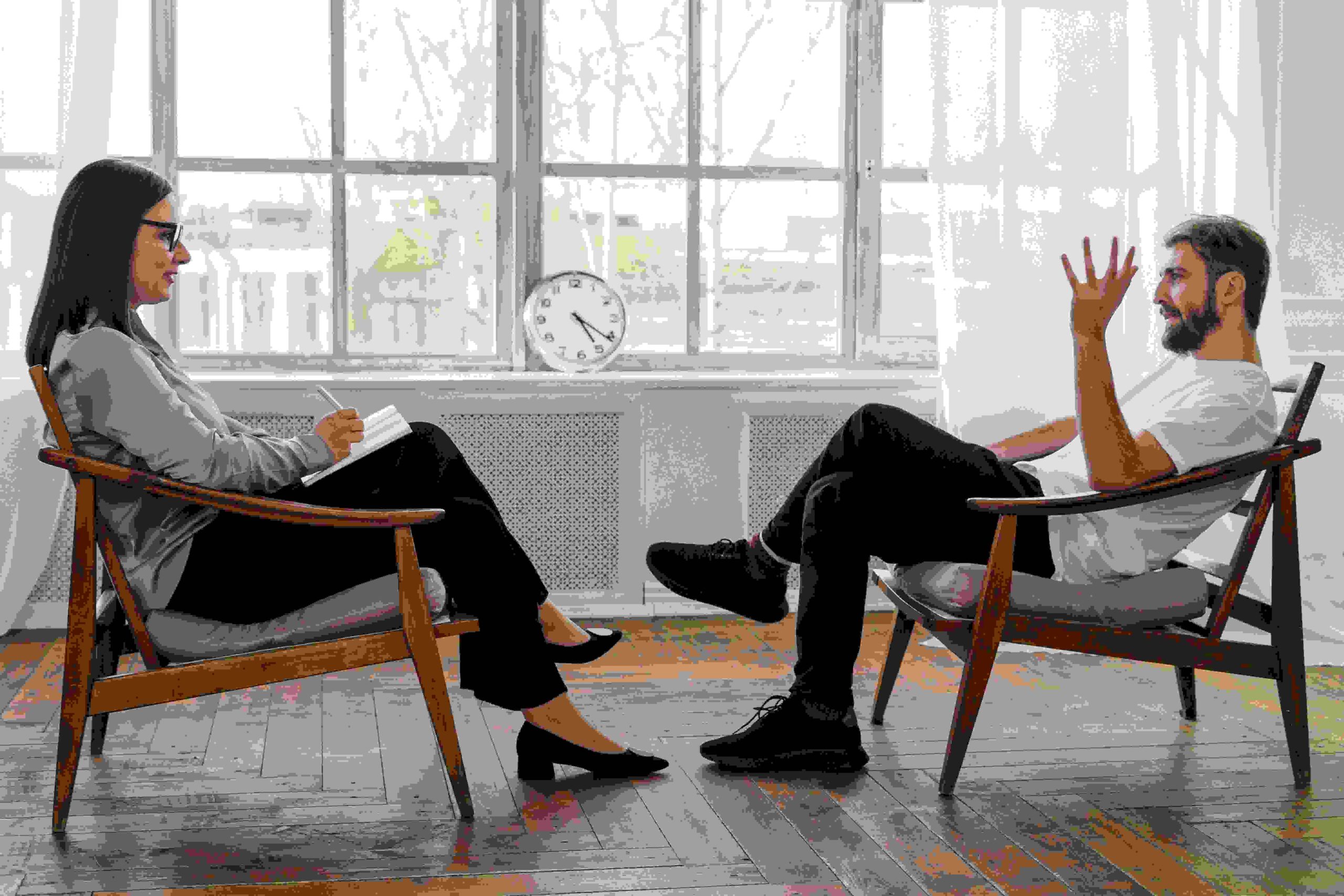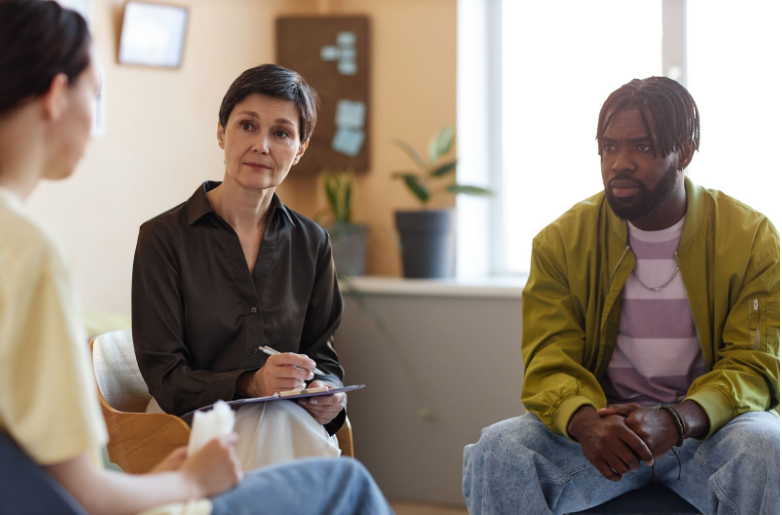Winter months can be challenging, especially when the days grow shorter, and natural sunlight becomes a rare commodity. For many, this seasonal change triggers a condition known as Seasonal Affective Disorder (SAD). If you find yourself feeling down during the winter months, you are not alone. One innovative solution is light therapy glasses, a convenient alternative to the traditional light therapy lamp. In this blog post, we’ll explore how light therapy glasses can help alleviate the symptoms of SAD and improve your overall well-being.
Seasonal Affective Disorder (SAD)
Seasonal Affective Disorder (SAD) is a type of depression that occurs at a specific time of year, most commonly during the fall and winter months when daylight hours are limited. Those affected may experience symptoms such as low energy, changes in sleep patterns, irritability, and difficulty concentrating. The lack of sunlight can disrupt the body’s internal clock and affect serotonin levels, leading to these depressive symptoms. Understanding the causes and effects of SAD is crucial for finding effective treatments, such as light therapy glasses, that can help restore balance and improve emotional health during the darker months of the year.
What is Seasonal Affective Disorder?
Seasonal Affective Disorder is a type of depression that occurs at specific times of the year, typically in the fall and winter months. It is more than just “winter blues”; it’s a recognized mental health condition that can significantly impact quality of life. Symptoms of SAD include feelings of sadness, low energy, sleep issues, changes in appetite, and difficulty concentrating.
Causes of SAD
While the exact cause of SAD is unknown, experts believe it is related to the lack of sunlight during the shorter days of fall and winter. Reduced sunlight can disrupt your body’s internal clock, leading to a drop in serotonin levels—a neurotransmitter that affects mood. Additionally, the change in season can disturb melatonin levels, which play a role in sleep patterns and mood regulation.
Who is at Risk?
Certain factors increase the likelihood of developing SAD. Women are diagnosed with SAD more often than men, and younger individuals are at higher risk. Family history of depression or other mood disorders can also be a contributing factor. Geographic location plays a significant role; those living far from the equator are more likely to experience SAD due to the substantial seasonal changes in daylight.
The Role of Light Therapy in Treating SAD
Light therapy has emerged as a popular treatment option for individuals suffering from Seasonal Affective Disorder (SAD). This approach aims to mimic natural sunlight exposure, helping to reset the body’s internal clock and boost serotonin levels, thereby alleviating depressive symptoms. One of the most convenient methods of light therapy is through the use of light therapy glasses. These innovative devices offer a portable solution that can be easily integrated into daily routines, making it simpler for those affected by SAD to attain the necessary light exposure needed to improve their mood and overall well-being.
What is Light Therapy?
Light therapy, also known as phototherapy, is a method used to treat SAD and other conditions by exposure to artificial light. The bright light mimics natural sunlight, which can trigger chemical changes in the brain that help lift mood and relieve other symptoms of SAD.
How Does Light Therapy Work?
Light therapy involves sitting near a device called a light therapy lamp, which emits bright light. Typically, sessions last about 20 to 30 minutes each day, ideally in the morning. The light from the lamp is measured in lux, and for effective treatment, the lamp should emit at least 10,000 lux. This exposure helps reset your circadian rhythm and balance serotonin and melatonin levels, alleviating symptoms of SAD.
Effectiveness of Light Therapy
Research has shown that light therapy is effective in treating SAD for many people. A significant number of individuals report improvements in their mood and energy levels after just a few sessions. It is a non-invasive treatment with relatively few side effects, making it a popular option for those suffering from seasonal depression.
Light Therapy Glasses As the awareness surrounding Seasonal Affective Disorder (SAD) continues to grow, so does the search for effective and convenient treatment options. Light therapy glasses present a modern answer to the challenge of obtaining sufficient light exposure during the darker months. These innovative devices are designed to be worn like regular glasses while providing the therapeutic benefits of light therapy, allowing individuals to seamlessly integrate treatment into their daily lives. This section delves into how light therapy glasses work, their advantages, and how they can serve as an essential tool in combating the effects of SAD.
What are Light Therapy Glasses?
Light therapy glasses are a modern twist on the traditional light therapy lamp. These wearable devices offer the same benefits as light therapy lamps but with added convenience and portability. They are designed to be worn like regular glasses and emit bright light directly into your eyes, providing the necessary exposure without needing to sit in front of a stationary lamp.
Benefits of Light Therapy Glasses
One of the primary benefits of light therapy glasses is their convenience. Unlike a light therapy lamp, which requires you to stay in one place, light therapy glasses allow you to move around and go about your daily activities while receiving treatment. This makes it easier to incorporate light therapy into your routine without disrupting your schedule.
How to Use Light Therapy Glasses
Using light therapy glasses is simple. Wear them for about 20 to 30 minutes each morning, ideally within an hour of waking up. The light should be bright enough to be effective but comfortable to wear. Consistency is key, so try to make it a part of your daily routine. Most models are adjustable, allowing you to control the brightness and duration of exposure.
Choosing the Right Light Therapy Device
When seeking effective solutions for Seasonal Affective Disorder (SAD), the choice of treatment device plays a crucial role in the overall success of therapy. With a variety of options available, it’s important to understand the distinct features and benefits of each type. This next section will guide you through the key factors to consider when selecting the right light therapy device, ensuring that you find the most suitable option to meet your individual needs and enhance your journey towards improved mental well-being.
Light Therapy Lamp vs. Light Therapy Glasses When it comes to choosing a light therapy device, consider your lifestyle and preferences. If you have the time to sit in front of a lamp each morning, a light therapy lamp might be suitable for you. However, if you need more flexibility and the ability to move around, light therapy glasses could be a better fit.
Features to Look for in Light Therapy Devices
When selecting a light therapy device, there are several features to consider:
Brightness: Ensure the device emits at least 10,000 lux for effective treatment.
Portability: Light therapy glasses are more portable than lamps, making them ideal for busy lifestyles.
Adjustability: Look for devices with adjustable brightness settings to customize your treatment.
Comfort: If choosing light therapy glasses, ensure they are comfortable to wear for extended periods.
Popular Brands and Models
There are several reputable brands that offer high-quality light therapy devices. Some popular options for light therapy lamps include the Verilux HappyLight and the Carex Day-Light Classic Plus. For light therapy glasses, consider brands like Luminette and Re-Timer, known for their effectiveness and user-friendly designs.
Making the Most of Light Therapy
In the quest for effective relief from Seasonal Affective Disorder (SAD), understanding the various devices available for light therapy is essential. This section focuses on how to optimise the benefits of light therapy by choosing the right device for your needs. With an increasing number of treatments on the market, knowing the distinguishing features and benefits of devices such as light therapy lamps and glasses can greatly enhance the therapeutic experience and support your journey toward better mental health.
Establishing a Routine
To get the most out of your light therapy, consistency is crucial. Try to use your light therapy lamp or light therapy glasses at the same time every day, ideally in the morning. This helps regulate your body’s internal clock and maximizes the benefits of the treatment.
Combining Light Therapy with Other Treatments
While light therapy can be highly effective on its own, it can also be combined with other treatments for SAD. Cognitive-behavioral therapy (CBT), medication, and lifestyle changes such as regular exercise and a healthy diet can complement light therapy and enhance its effectiveness.
Monitoring Your Progress
Keep track of your symptoms and progress throughout your light therapy treatment. Note any changes in your mood, energy levels, and sleep patterns. This can help you determine the effectiveness of the treatment and make any necessary adjustments.
Conclusion
Seasonal Affective Disorder can significantly impact your quality of life, but with the right treatment, you can manage your symptoms and enjoy the winter months. Light therapy glasses and light therapy lamps offer convenient and effective solutions for alleviating SAD symptoms. By understanding your options and choosing the right device for your needs, you can take control of your mental health and brighten your winter days. If you’re struggling with SAD, consider incorporating light therapy into your daily routine and experience the benefits for yourself.








Leave a Reply
You must be logged in to post a comment.